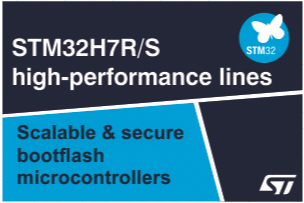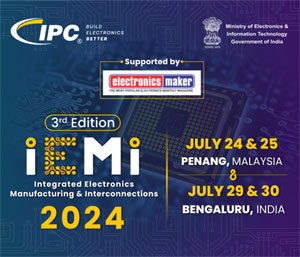
The semiconductor industry is at the heart of India’s technological transformation, with growing domestic production and government-backed initiatives shaping its future. In this exclusive interview, Jayraj Nair, Global Field CTO Hi-Tech and Regional CTO APAC at Ansys, shares insights on India’s semiconductor ambitions, key challenges, and the role of cutting-edge simulation tools in accelerating innovation. He discusses Ansys’ contributions to industry-academia collaboration, startup enablement, and strategic partnerships, highlighting how these efforts align with India’s vision for a self-reliant semiconductor ecosystem.
1. Semiconductor chips are critical to a wide range of industries, from consumer electronics to defense systems. How do you view their role in shaping the future of technology and innovation in India, particularly with the increasing demand for domestic production?
India is looking forward to increasing domestic production of semiconductor chips, taking into account various issues associated with the supply chain. We are a net importer today, while the semiconductor industry is projected to grow to 271.9 billion US dollars by 2032, with a CAGR of 26%.
The estimates suggest that the global semiconductor market will grow to 1 trillion US dollars by 2030, and the Indian government is making strategic moves to secure strategic autonomy and a more significant market segment share in this vital sector. For example, the Semicon India Programme enables the growth of locally manufactured semiconductors and displays in India.
In association with Taiwan-based Powerchip Semiconductor Manufacturing Corporation (PSMC), Tata Electronics is setting up a commercial semiconductor fabrication facility, India’s first FAB. The 10 billion investment will focus on manufacturing semiconductors for automotive and AI scenarios.
The government has also introduced subsidy programs covering up to 50 percent of project expenses for constructing semiconductor and display fabs, adding local and foreign investors. Semiconductors are crucial to national security, powering sophisticated military equipment and encrypted communications. India plans to enhance its domestic manufacturing capacity to reduce import dependency and guarantee a constant supply of chips for military applications.
2. India’s semiconductor consumption has been growing rapidly. What are the biggest challenges the country faces in building a robust domestic semiconductor manufacturing ecosystem, and how is Ansys helping to address these challenges?
Key obstacles include steep up-front investment, estimated to be around $5-$7 billion to establish a single chip fabrication plant. The talent shortage is another aspect, as there are not many electronics engineers with experience in device physics and process technology readily available in the market.
Most of the early movers in India are training engineers in collaboration with their partners. The government is also collaborating with businesses and universities to advance curriculum and skills training to further this goal.
As part of the Indian government’s Chips to Startup (C2S) program, Ansys makes its simulation tools available to the participating institutes and start-ups to foster creativity and attempt to address the skill shortages required to support India’s semiconductor aspirations.
3. The global semiconductor chip shortage during the COVID-19 pandemic impacted industries worldwide. How has this shaped India’s approach to becoming self-reliant in semiconductor production, and how is Ansys contributing to this shift?
The COVID-19 pandemic sparked a global semiconductor shortage that impacted various industries, particularly automotive, electronics, and communications. It caused production cuts and job losses for nearly three years.
The semiconductor manufacturing industry is very concentrated, with major manufacturers in Taiwan, China, South Korea, and the USA. Most countries are now focused on developing strategic autonomy. In India, we are making a concerted effort to reduce that dependence. Ansys aids these initiatives by providing advanced simulation tools for enhancing productivity, reducing latency, and increasing chip reliability. These tools allow industry leaders and start-ups to comply with workflows in the High-Tech industry.
4. Can you elaborate on the significance of the “India Semiconductor Mission” and its impact on the domestic semiconductor ecosystem, particularly in advancing India’s manufacturing capabilities and infrastructure?
The India Semiconductor Mission, or ISM, is part of the Digital India Corporation’s Program and focuses on creating a strong semiconductor and display ecosystem. The Indian government launched the Semiconductor India Program with a nearly $9 billion budget in December 2021. By targeting cost-effective technology starting from 28nm process nodes, India can cater to high-demand sectors. This move will help enhance domestic sales and can lead to an export surge. It aligns well with the goals of 2047 Viksit Bharat.
5. Initiatives like AatmaNirbhar Bharat and programs such as C2S and DLI aim to reduce India’s import dependency. How do you view the role of these initiatives in accelerating India’s semiconductor industry, and how is Ansys complementing these government efforts?
Initiatives like AatmaNirbhar Bharat and programs such as Chips to Startup (C2S) and the Design Linked Incentive (DLI) scheme are pivotal in advancing India’s semiconductor industry by fostering self-reliance.
Ansys supports these initiatives by offering advanced simulation tools under the C2S and DLI programs. This collaboration helps bridge the skills gap in the semiconductor sector. It aligns with India’s broader objectives of achieving technological self-sufficiency and emerging as a global leader in the semiconductor market. It also enables net new job creation in research and development, manufacturing, and testing, thereby contributing to India’s goal of securing a larger share of the global Hi-Tech market.
6. Could you share more about the Ansys Academic Program and how it is enabling universities to contribute to semiconductor and electronics research?
Thousands of universities worldwide utilize engineering simulation software through the Ansys Academic Program to teach students physics principles and assist researchers in solving complex engineering challenges.
Significant research is conducted on campuses, and it’s crucial for the next generation of engineers to graduate with hands-on experience in simulation software. To make simulation more accessible, we prioritize strategic engagements with key researchers, educators, and students globally.
Ansys collaborates with professors and institutions to develop curriculum materials, integrate them into core courses, and produce textbooks and teaching guides.
In India, Ansys has partnered with MeiTY’s C2S program to provide access to industry-standard tools like RedHawk-SC, Totem, PowerArtist, RaptorX, and VeloceRF to participating institutes. Ansys has also conducted several enablement sessions with the ChipIN centre to enhance researchers learning journeys.
As a global advisor to India’s national R&D and workforce programs in integrated systems packaging, Ansys supports the industry-academia consortium, which includes several prestigious institutes, in establishing Industry Co-development Centres.
7. How does Ansys assist startups in achieving their innovation, time-to-market, cost, and performance goals, particularly in such a competitive sector?
Unlike big businesses that can afford to design chips with multiple iterations, startups generally have tiny budgets and are expected to deliver functional advanced chips/IPs from the start. To help overcome these challenges, Ansys offers innovative solutions like our patented Sigma Technology for power integrity sign-off. This AI-driven tool enhances analysis coverage, catching issues like simultaneous switching noise early in the placement stage through a shift-left approach, reducing design cycles significantly.
Ansys’ Startup Program provides new ventures with affordable access to powerful simulation bundles, including tools such as RedHawk-SC, which is fully cloud-compatible for companies without an on-premise computing environment. Startups also use our simulation tools alongside our Ansys Learning Hub for training.
8. How does simulation address the demands of creating reliable and efficient semiconductor designs, especially in the context of next-gen products?
We have 3D IC’s with multi-die architectures that essentially requires multi-physics and multi-domain expertise. With several hundred billion transistors packed in heterogenous configuration as chiplets with memory and interconnects, we must consider systems integrity in new ways. These chips are getting tightly integrated and are more bespoke, workload, and application-specific.
Traditional IR and EM reliability simulations aren’t enough, and we need to account for multi-physics simulations, including mechanical and thermal effects. Tools such as Redhawk-SC allow distributed operation on thousands of CPU cores, which will help us maintain high performance and scalability. It’s the new world of Power, Signal, Thermal, Optical, and mechanical integrity. Thermal-related mechanical warpage and stress are a big challenge as these chips and systems become more complex.
9. What role do partnerships and collaborations with other technology providers play in Ansys’ efforts to accelerate semiconductor design and innovation? Can you share any examples of successful collaborations that have helped your customers achieve their goals?
Ansys has established partnerships with various foundries, allowing our simulation tools to be certified for the latest technology nodes. This cooperation is quite intensive for both Ansys and foundry engineers, but it helps ensure the tools’ readiness when new nodes are commercially released.
One example is the latest standard that TSMC has unveiled for 3D IC design 3Dblox. Ansys collaborated with TSMC and many other EDA vendors to enable our tools to adapt to the new 3DFabric technology, which enhances multi-chip simulations. Moreover, the work we undertook with Synopsys to develop Fusion Flow allows designers and engineers to conduct Ansys simulations within the IC compiler setting efficiently. Another example – NVIDIA has developed a workflow to run flat, full-chip power integrity and reliability signoff analysis using a fully distributed compute and big data solution with Ansys RedHawk-SC. They achieved a turn-around time of well under 24 hours for full-chip flat power signoff analysis on NVIDIA’s largest GPU. Additionally, silicon correlation exercises performed on the Volta chip using RedHawk-SC produced simulated voltage values within 10 percent of silicon measurement results. Such partnerships enable faster product innovation.
10. How does Ansys plan to expand its support for India’s semiconductor sector, especially with the government’s focus on building a self-reliant ecosystem?
Ansys is involved in the C2S and DLI programs, offering access to tools like PowerArtist, RedHawk-SC, Totem, RaptorX, and VeloceRF for participating institutes and startups.
Participants in the C2S program receive quick-start training through webinars hosted by C-DAC, along with support from Ansys’ application engineering team for tool setup and flow development.
Additionally, Ansys provides grants for semiconductor course development at selected universities, further strengthening collaboration between industry and academia.
11. How do you see India’s semiconductor industry positioning itself globally, and what potential do you see for India to emerge as a key player in semiconductor manufacturing and innovation?
India has a unique advantage with its vast talent pool. Already, the majority of the global semiconductor design houses have a significant portion of their workforce in India, and each year, thousands of electronics and electrical engineers graduate, providing a strong workforce ready to drive the semiconductor industry forward.
This is India’s moment for a semiconductor revolution, much like the White and Green Revolutions of the past.
With the right policies and a favorable environment, we’re seeing more startups and Indian-based companies like Tata Electronics and L&T Semiconductor Technologies emerging as semiconductor design houses.
The enthusiasm and motivation of bright Indian engineers are now backed up with amazing government support. We are very excited to enable this transformation.






